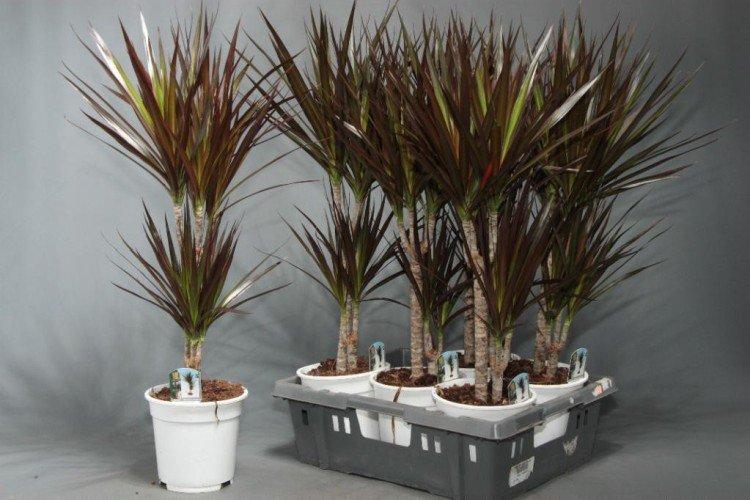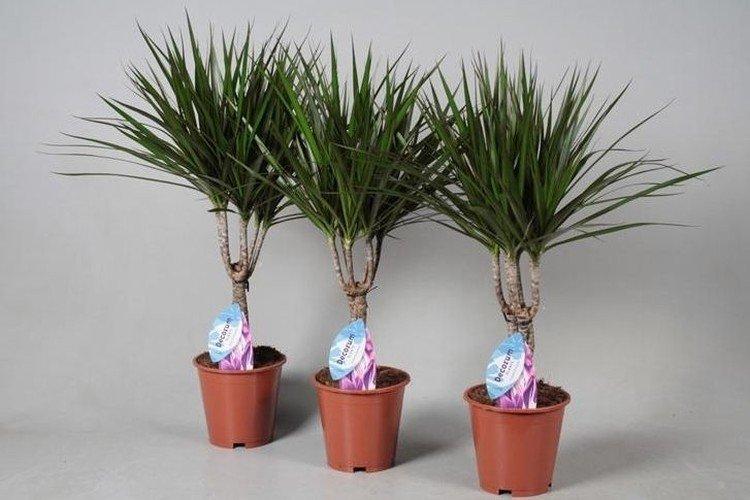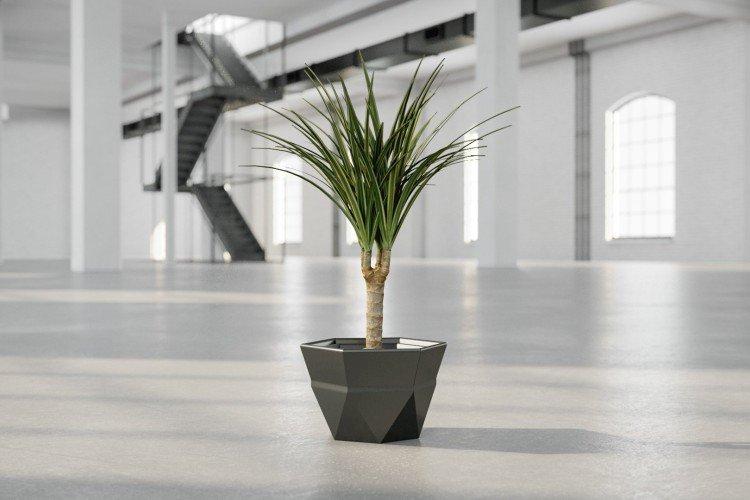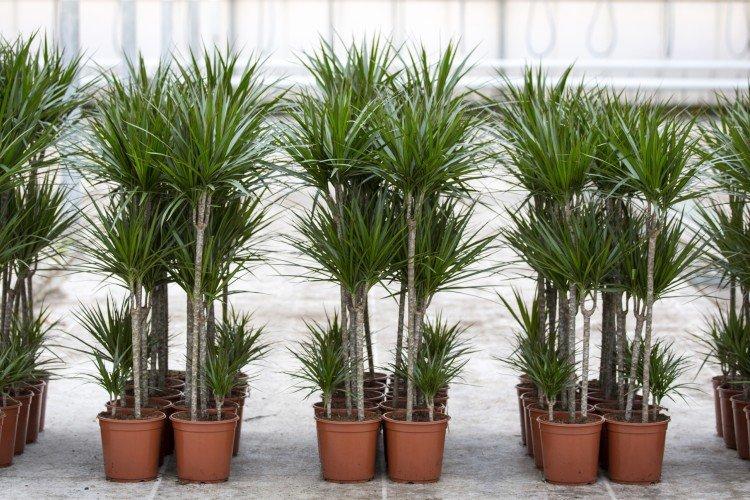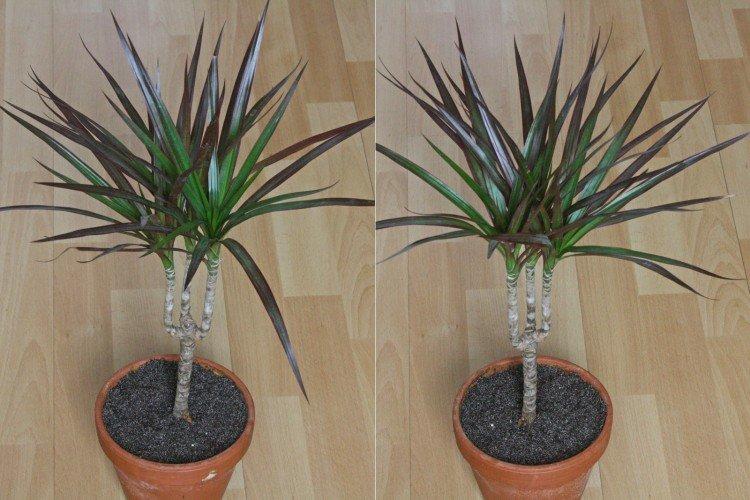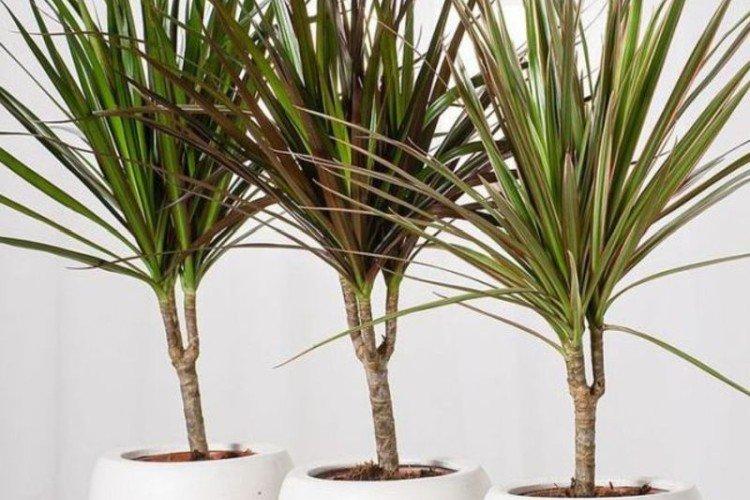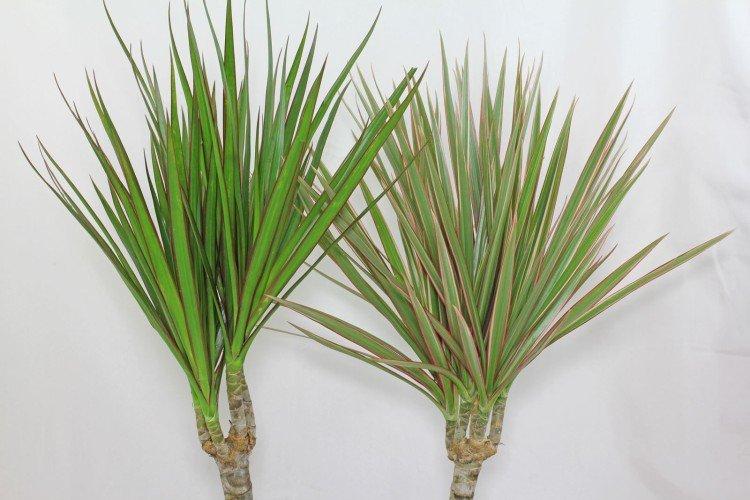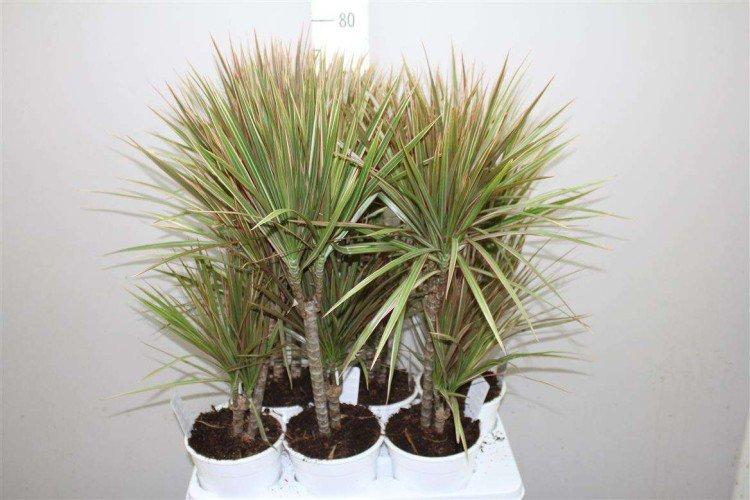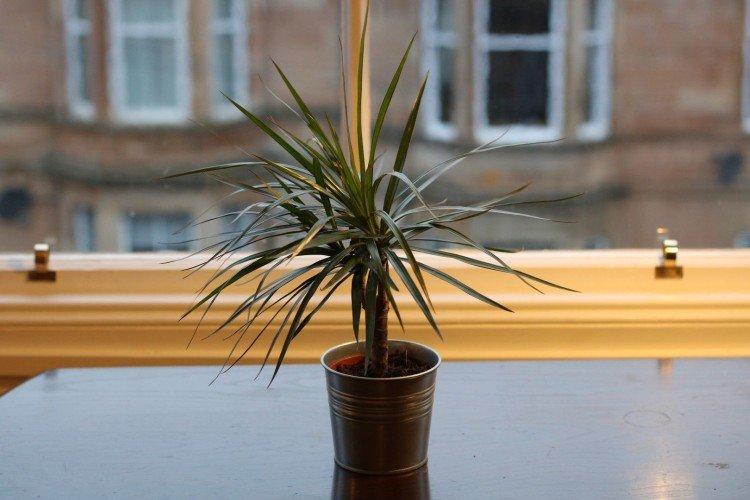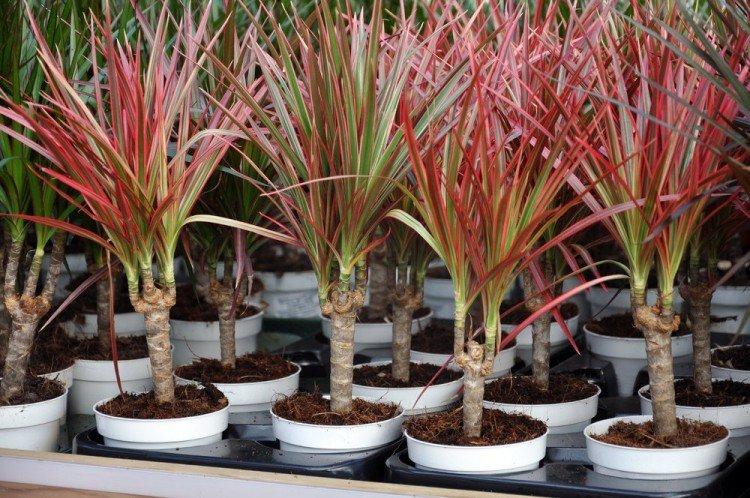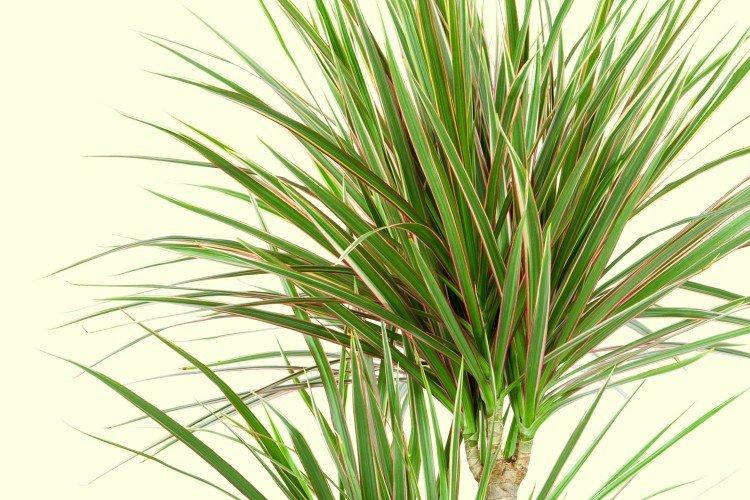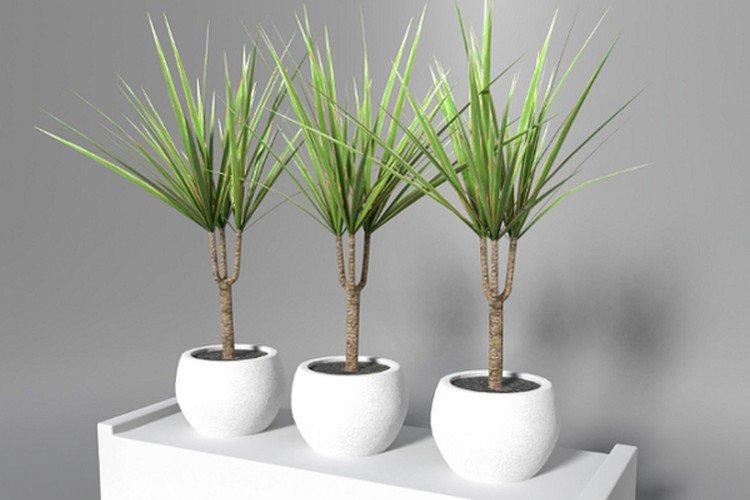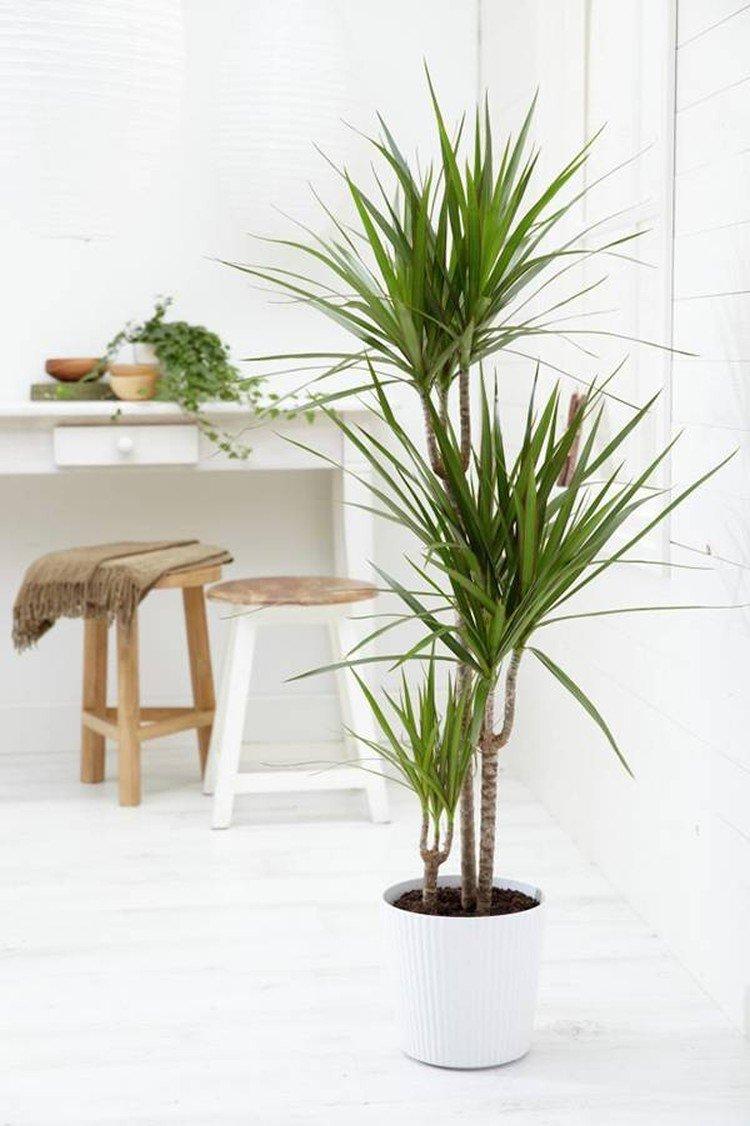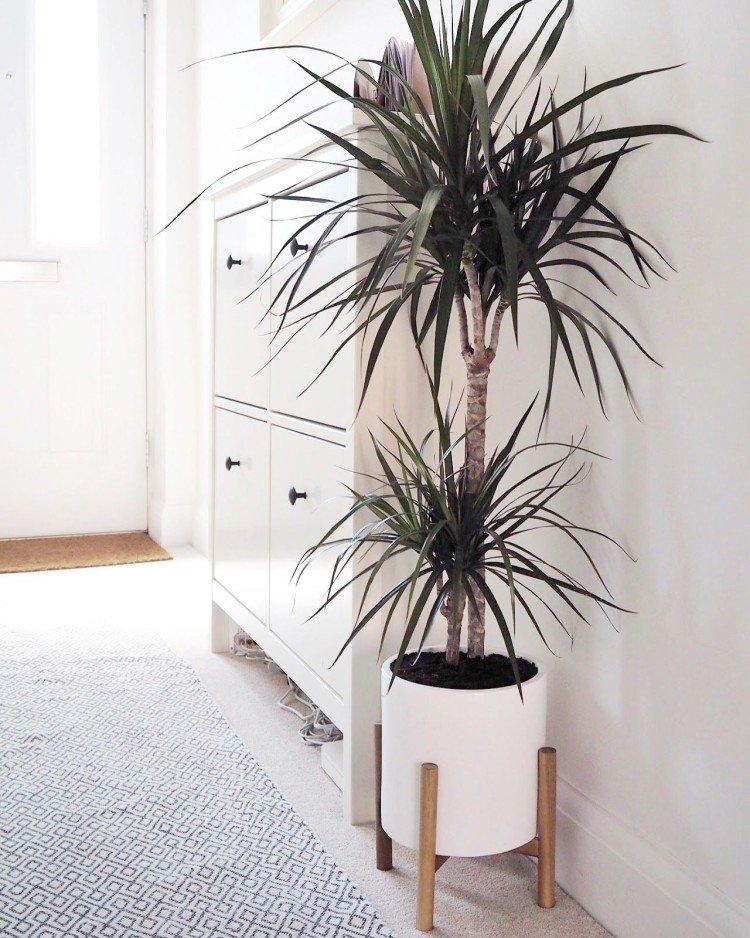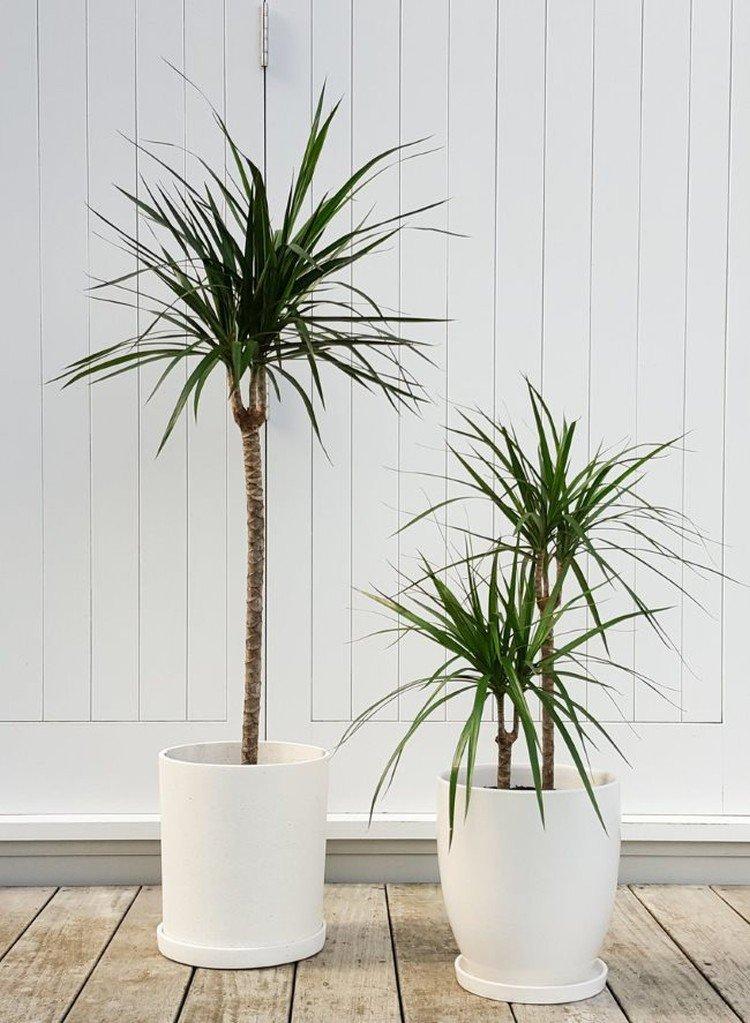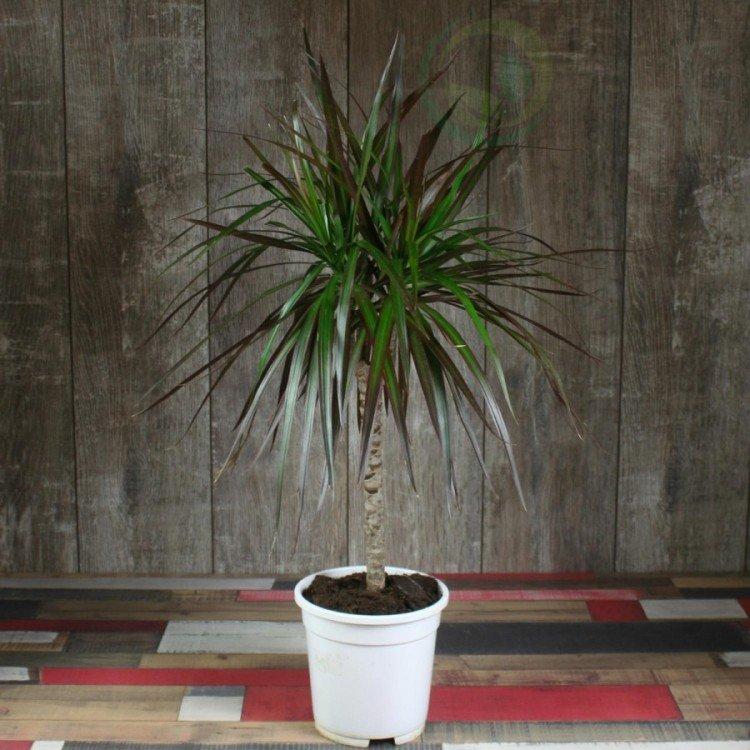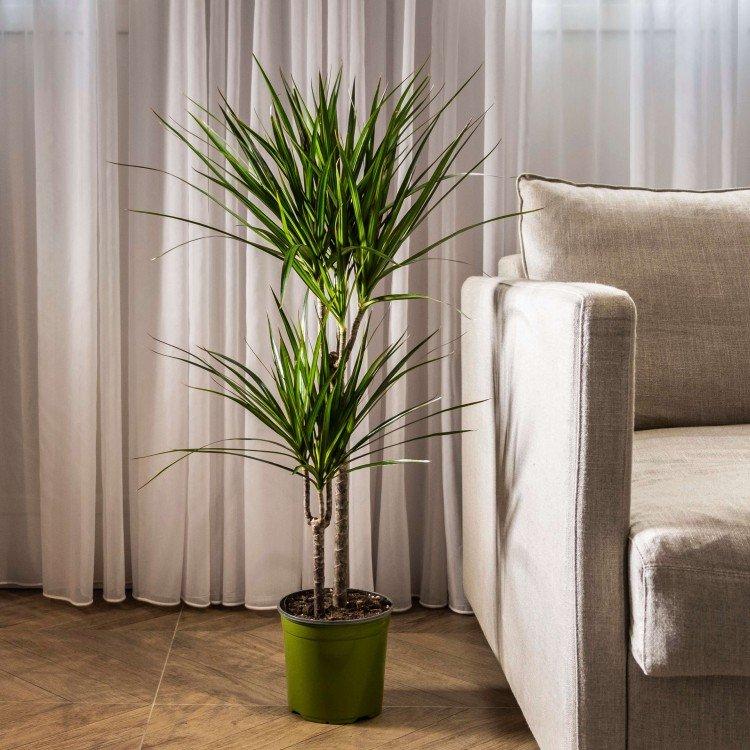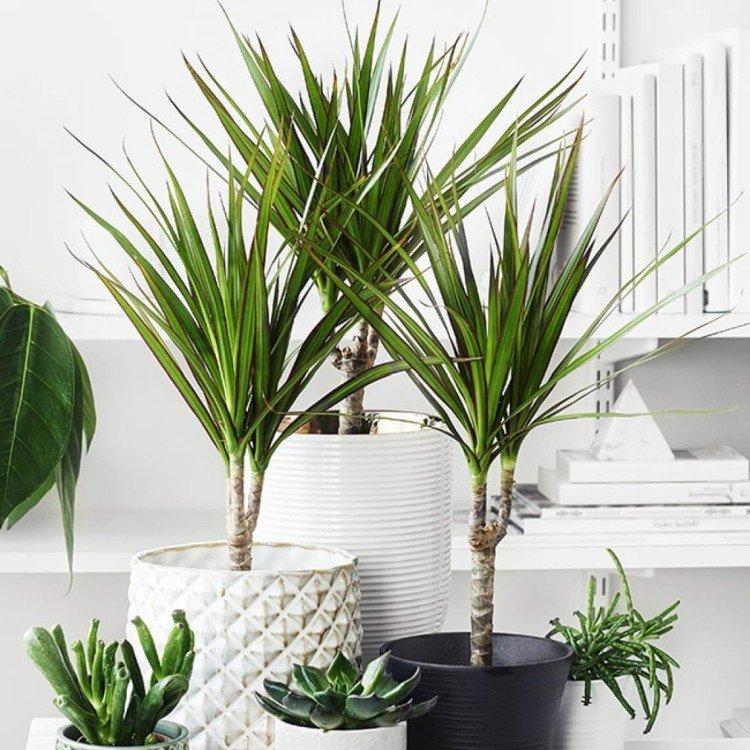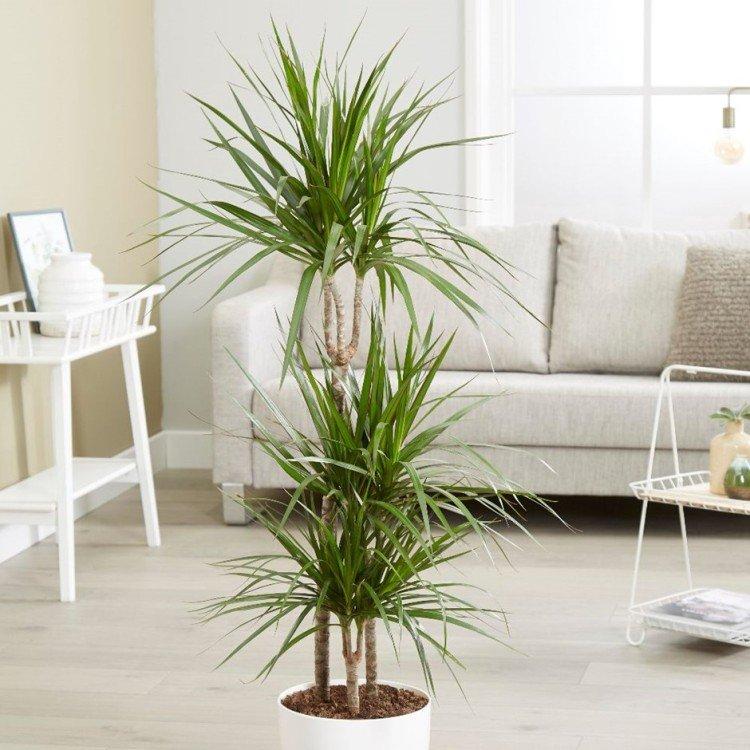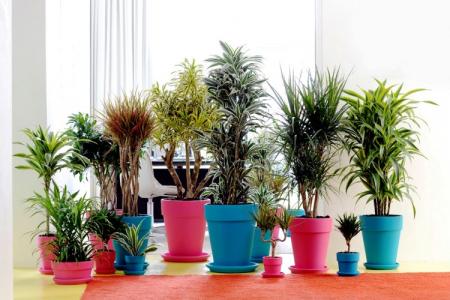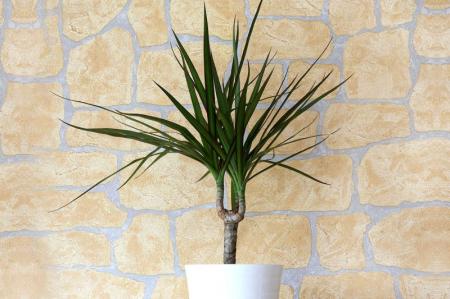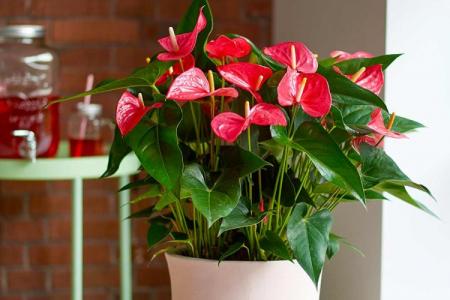
Dracaena marginata is prized for its exotic beauty and evokes thoughts of tropical palm trees bathing in the sun to the sound of the surf. She is very unpretentious and at the same time very tall - easily grows up to three meters even at home. And its unusual leaves stand out with a bright border, because of which the plant is also called bordered. Let's tell you more!
general information
Dracaena marginata came to us from Madagascar, and in its natural environment it grows to an impressive 5 meters. Of course, the plant grows smaller indoors, but it still remains one of the tallest and fastest growing. By the way, dracaena can even bloom, although it almost never does it at home.
Marginata is one of the most undemanding of all dracaena, but very useful. For example, it humidifies the air and cleans it from harmful impurities, including formaldehydes. It easily tolerates the lack of sun and moisture, so it is often used in hotels, restaurants and offices.

Appearance
Dracaena marginata is called bordered due to the fact that bright green leaves are highlighted at the edges with a border. It is reddish, brown or purple in color. The leaves are narrow and pointed, on a wide, bare trunk, which is why the dracaena looks so much like a tropical palm tree. True, in fact, it refers to asparagus.
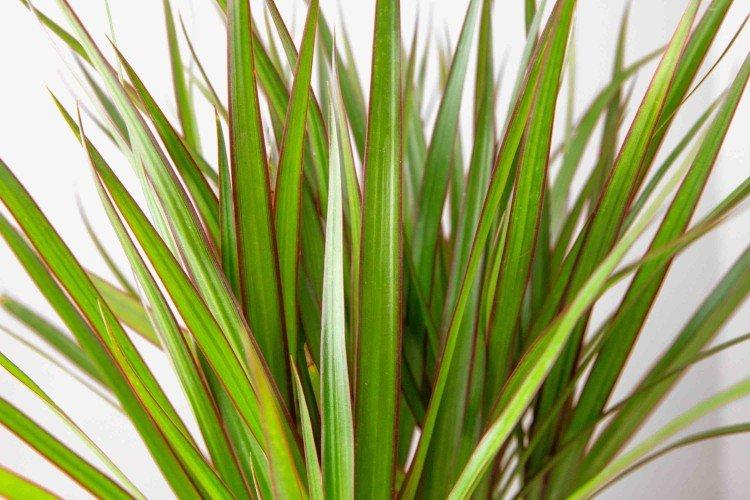
Dracaena marginata care
Dracaena marginata is perfect even for novice growers, because it almost does not cause trouble. She needs minimal conditions and very little attention, which we will tell you about in more detail. The main thing is to protect the leaves from damage!
Temperature
In summer, the optimum temperature for a plant is 18-25 degrees with periodic moisture. In winter - 15 and above, and it is important to avoid frosty air when ventilating. If the dracaena begins to shed green leaves without other symptoms, then the temperature is not suitable for her or the draft is worried.
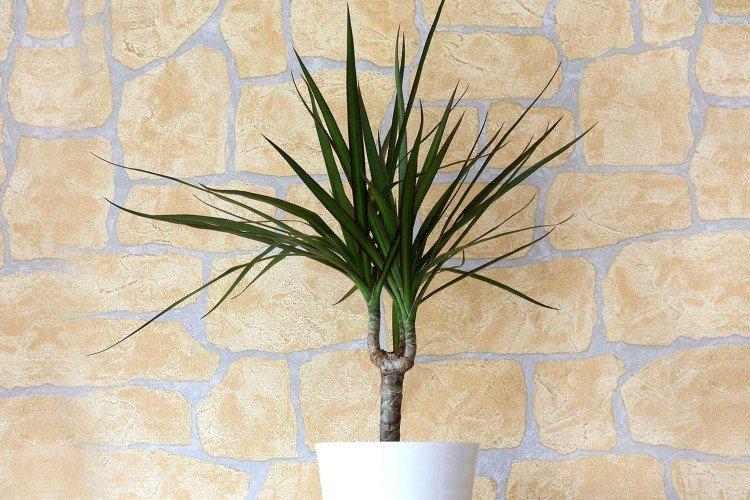
Lighting
Dracaena marginata belongs to variegated varieties, therefore it loves light, but feels good in partial shade. Although she normally tolerates a lack of lighting, if it is critically small, the leaves will begin to fade and fade. And because of the direct sun, whitish or yellowish burns may appear.
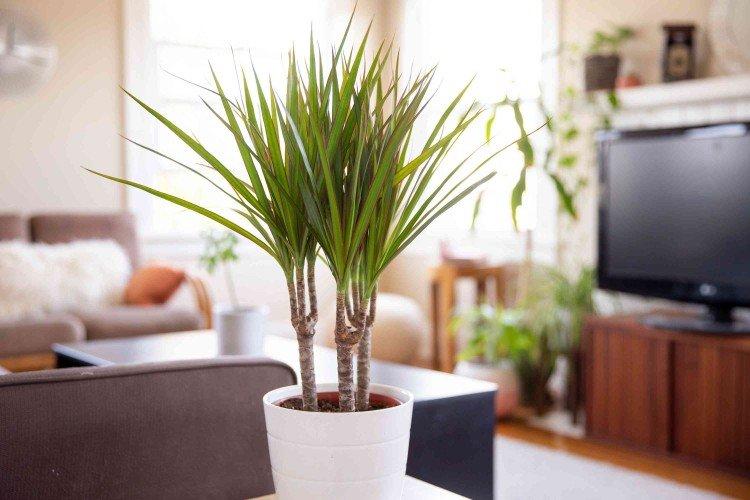
Watering
Dracaena does not need to be watered too often - just a couple of times a week during the summer season. Before the next watering, the soil should dry out at least 2 cm, and it is recommended to periodically loosen the top layer and add fresh substrate. If the dracaena marginate lacks moisture, the leaves begin to dry from the tips, curl and fall off.
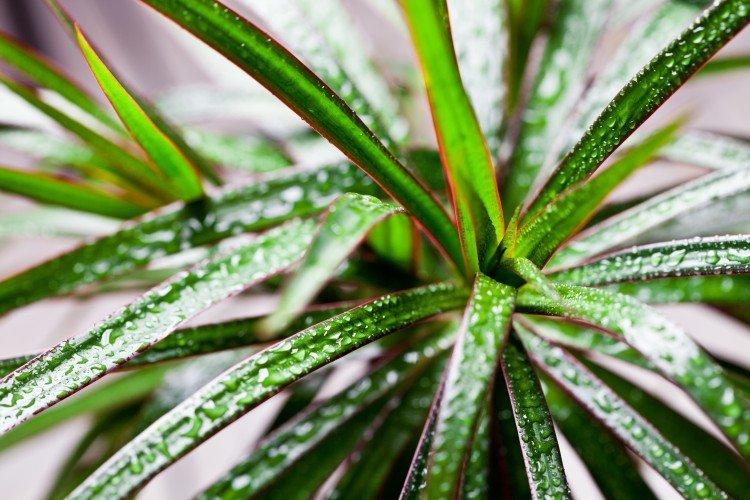
The soil
Be sure to need a light soil that dries out evenly and provides air circulation. Dracaena leaves are a sure indicator of whether the soil is suitable for her. For example, with an excess of peat, they turn red, and with an excess of fertilizer, the border becomes as if watery.

Fertilizers and feeding
In order for dracaena marginata to grow well, it is recommended to feed it with complex mixtures for deciduous plants throughout the year. You can use liquid fertilizers or universal sticks. In winter, halve the dosage and increase the intervals between feedings.
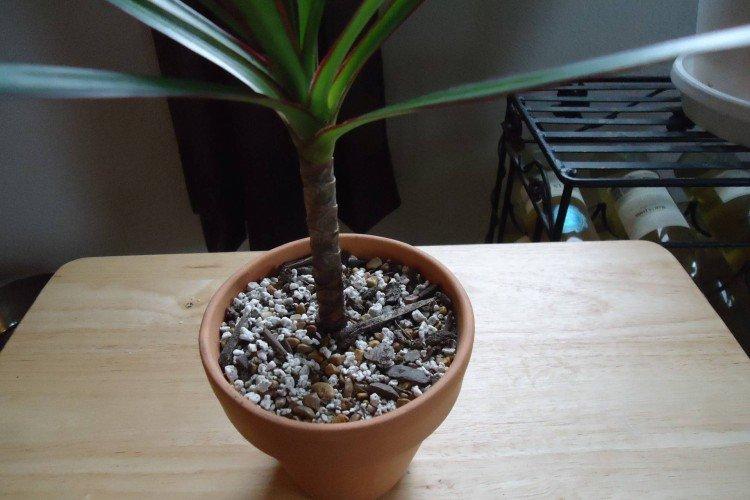
Transplant and reproduction
It is most convenient to propagate dracaena with an apical cuttings, which are rooted in warm water or loose substrate. Add decontamination charcoal to the water and change as it becomes cloudy. If using a substrate, treat the cutting and soil with rooters.
In order for the stalk to grow better, it needs greenhouse conditions under a jar or film. But do not forget to ventilate the greenhouse for 15 minutes every day, and spray the leaves every other day. Use only settled water at room temperature and do not flood the substrate itself so that it does not rot.
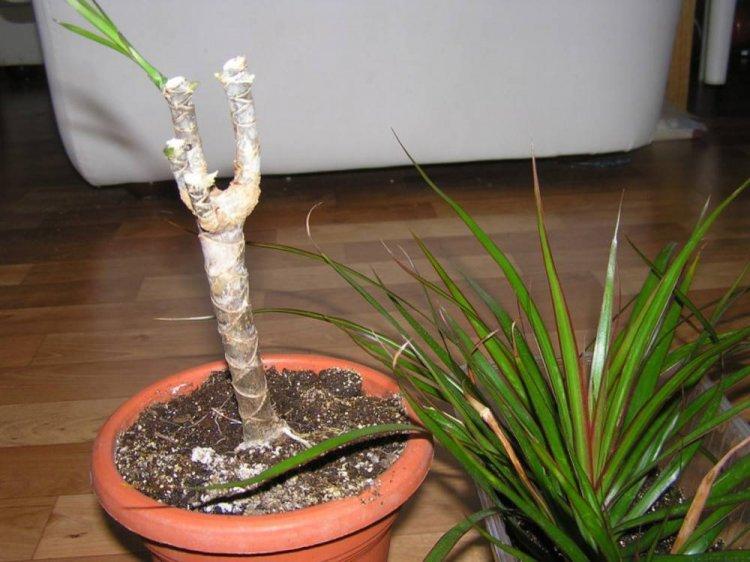
In addition to the apical, stem cuttings with a length of 10 cm or more can be used.They are rooted in the same way or in a horizontal way - they are immediately laid on the surface of a moist substrate, without sprinkling with earth. Dracaena propagation takes time - up to 1.5-2 months.
The plant is transplanted in the spring, otherwise there is a high risk of stopping its growth for the whole year. It is important not to damage the root system, so it is better to use the transshipment method. A generous drainage layer is imperative so that water does not stagnate in the ground.
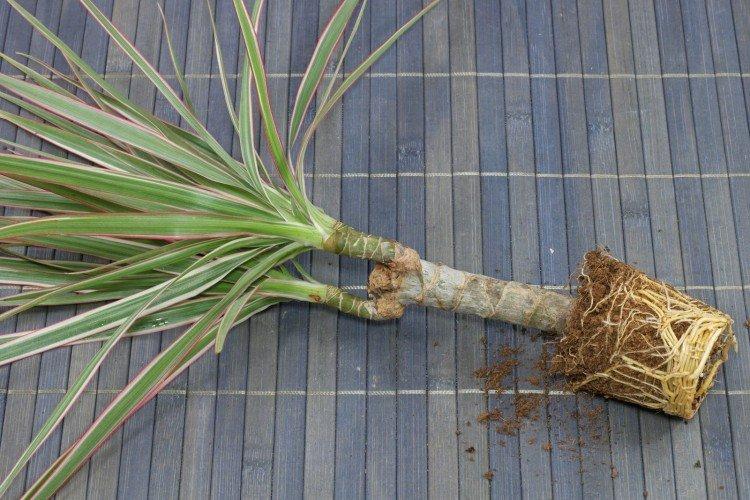
Pruning
Dracaena marginata does not need to be pruned. It makes sense to produce it only for tree propagation or for decorative purposes, but strictly on a healthy plant. Otherwise, as it grows, old leaves die off by themselves, and new ones grow upward. Scars remain in place of the old ones, which are clearly visible on the wide lignified trunk.
You cannot cut off parts of the leaves, because dracaena is very sensitive to damage. For the same reason, we do not recommend rearranging and turning it over again. It is necessary to minimize the risks of mechanical injury.
Scissors are absolutely not suitable for cutting branches and shoots - take a sharp, sterile knife. Otherwise, due to the transferred tissues, the plant will weaken and may wither. The cut should be straight, and it is better to treat this place with paraffin. After that, a greenhouse is made of film for a whole month, and soon new buds will appear on the cut.
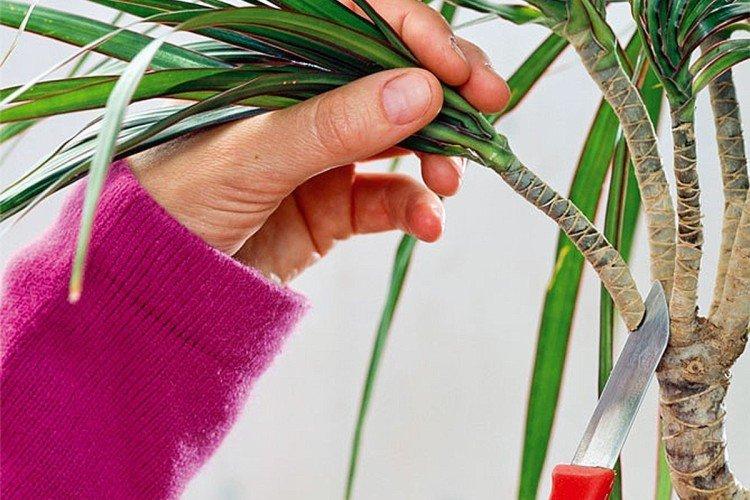
Pest and disease control
Indoor dracaena rarely suffers from pests and hardly gets sick with proper care. The most dangerous problem is all kinds of rot that appear due to stagnant water and excessive watering. The first symptoms - the leaves change color, become stained, soften.
Whitish bloom on the leaves is a sign of powdery mildew, and spots of different colors can signal Fusarium, Alternaria and other sporoses. Fortunately, most drugs act immediately on all types of bacteria and fungi.
The spider mite leaves a pale cobweb on the leaf stalks. Brown plaques on closer inspection turn out to be a scabbard, and black spots with silvery scratches indicate thrips. Even less often, dracaena marginata is affected by aphids or mealybugs.
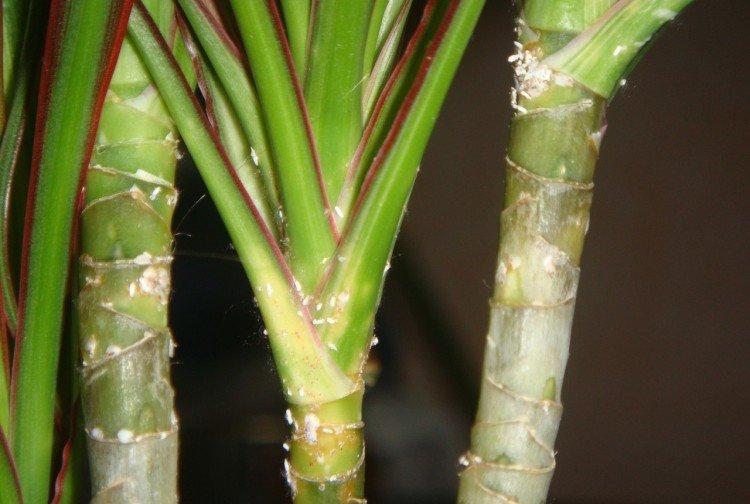
Dracaena marginata - photo
Dracaena marginata is ideal for creating green islands at home and in the office. It fits harmoniously into any interior and decorates the room!
